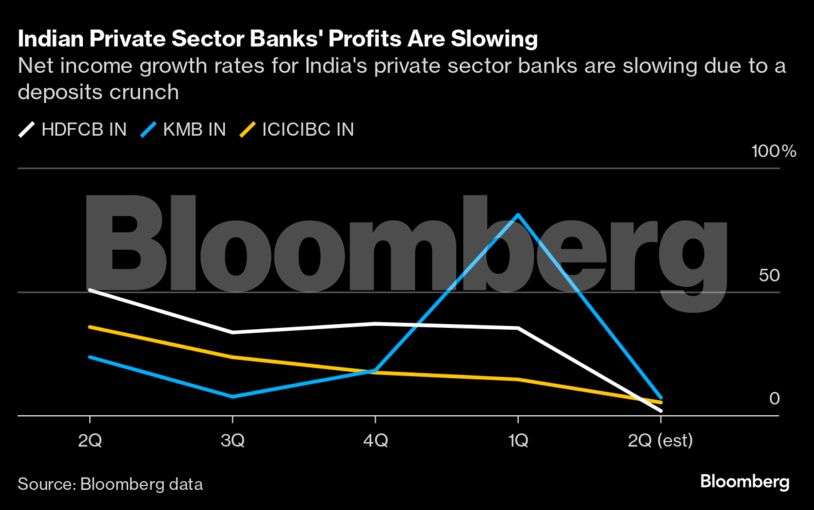[ad_1]
Indian banks’ rising credit costs and their struggle to attract customer deposits to mitigate this will continue to dominate discussions when HDFC Bank Ltd. and Kotak Mahindra Bank Ltd. report earnings on Saturday.
Banks in India that have used customer deposits to help finance their lending operations have seen these deposits dry up in recent quarters, as Indians increasingly park their money in equity funds over savings accounts and fixed deposits. Lenders have slowed loan growth, especially in retail segments, reflecting concerns from India’s central bank about unsecured loans and the need to lower loan-deposit ratios, analysts at Jefferies wrote.

HDFC Bank, whose loan-deposit ratio is especially high, managed to increase deposits 5.1% from a quarter ago, it said in a pre-earnings update earlier this month. Quarterly net income is still projected to grow just 1.9% as the company continues efforts to rein in its loan-deposit ratio to the central bank’s standard.
Markets are also split on a rate cut in December after inflation accelerated at a faster pace than expected last month. With high rates, banks also face high credit costs because of the lag in the repricing of deposits, which will worsen once rate cuts kick in.
Highlights to look out for:
Saturday: HDFC Bank and Kotak Mahindra Bank should see second-quarter profit grow 1.9% and 7.3%, respectively. Net income growth at HDFC Bank is expected to lag similar-sized banks while it beefs up deposits. This has led to a lower valuation than ICICI Bank and Kotak Mahindra, measured by price-to-book value. Kotak Mahindra is still banned from taking on new customers digitally, or issuing new credit cards. Analysts at Bloomberg Intelligence said this probably dragged on profit as it added compliance and technology costs.
Tuesday: Bajaj Finance’s second-quarter net income should rise 16%, estimates show, supported by higher net interest income. The shadow lender’s second-quarter update led to concern about margins falling. Citi said Bajaj Finance’s net interest margin may decline by 14 basis points on a sequential basis because of higher funding costs.
Wednesday: Hindustan Unilever’s second-quarter volume likely grew faster than in the first quarter, benefiting from a recovery in rural demand, with analysts at PL Capital and Motilal Oswal expecting 5% growth. Still, a rise in palm oil, cocoa and coffee prices likely weighed on margins, and consensus estimates predict a 1.3% drop in profit.
[ad_2]
Source link





